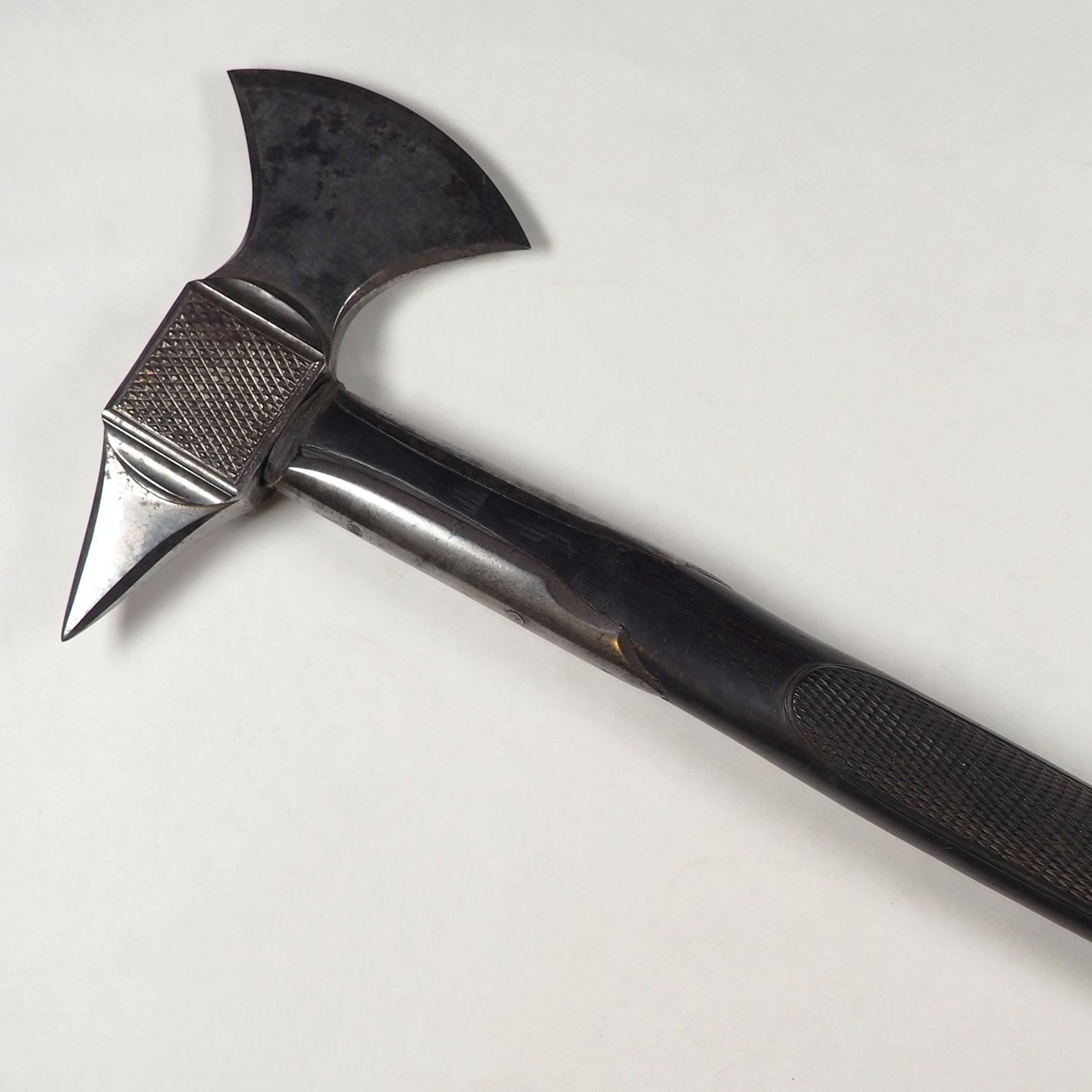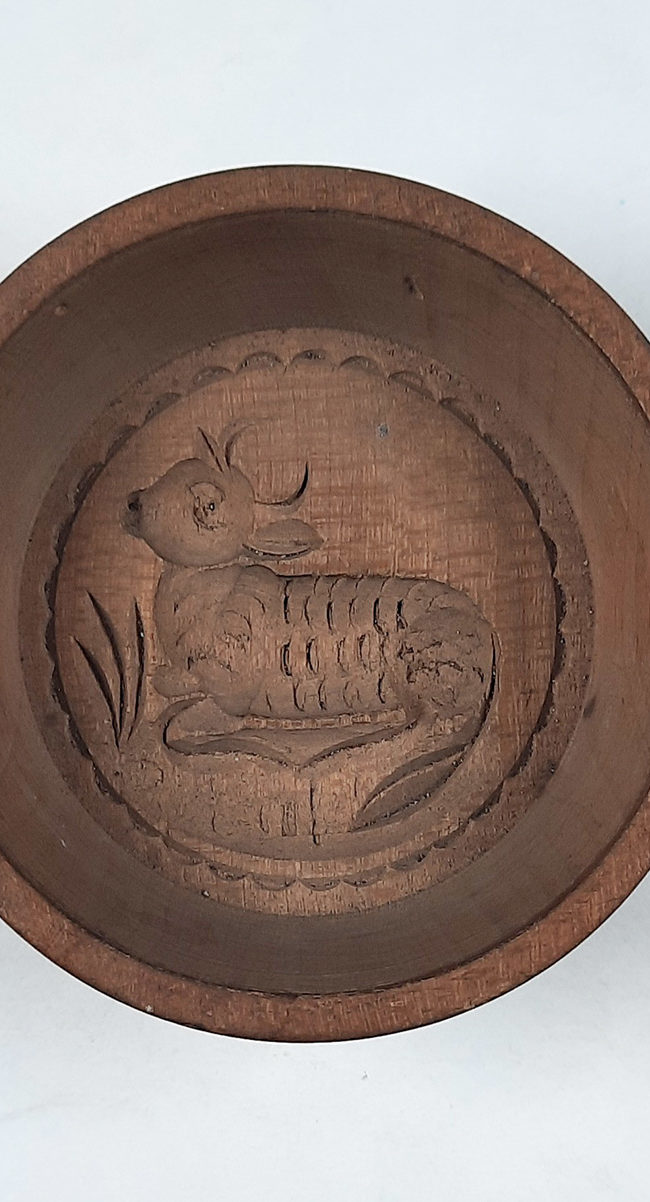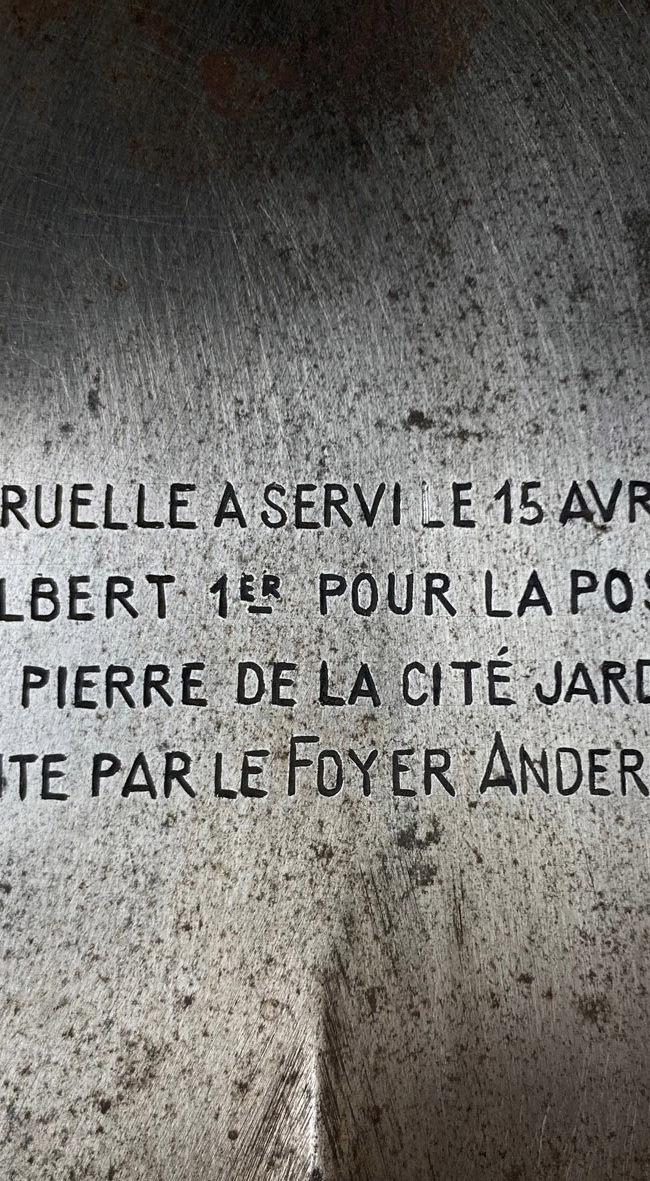
Unusual Object No. 11

Fireman’s axe
From firewatch to SIAMU: the firefighters of Belgium
During the reorganisation of the beguinage, Erasmus House is honouring an unusual object from the vast historical, archaeological, folk art and religious art collections of the municipal museums each month. This month, our museum is displaying an axe used by the firefighters of Anderlecht.
Fireman’s axe
Firefighter’s axe bearing the inscription “À son président le capitaine commandant Émile Bissé. La société des sapeurs-pompiers volontaires du bataillon de la garde civique active d’Anderlecht” (The Society of Volunteer Firefighters of the Active Civic Guard Battalion of Anderlecht to its president, Captain Commander Émile Bissé).
Belgium
Steel
1850-1900
48 x 17.6 cm
Inv. BEG 5427
Cities have always relied on bodies tasked with putting out fires. This has been a constant from Antiquity to the present. So it is that the first fire brigades, called milites, were part of the urban watches set up in Europe’s Gallo-Roman cities. This profession still exists, centuries later, and the Erasmus House & Beguinage Museums propose to teach you more about these firefighters.
The history of firefighters
In 1699 François du Périer Dumouriez gave Louis XIV a demonstration of a revolutionary tool, the pump, that made it possible to transport water from one point in a city to another. The pump was maintained and its levers operated by men known as “pump guards” or “pumpers”, explaining the French term pompiers. On 15 August 1800, with Belgium still under French rule, a Brussels fire brigade was created, the members of which came from the Civic Guard. This militia, which was officially recognised by a decree in 1831, was made up of men between the ages of 21 and 50 wearing distinctive blue smocks for uniforms. The members of this militia were given only minimal military training. Indeed, it consisted of an army of “men acting as good fathers should”, careful with their money and responsible for keeping law and order locally. After the peace treaty signed with the Netherlands in 1839, the Civic Guard declined sharply, except in towns with more than 10 000 inhabitants. Today the force no longer exists.
The second largest body of firefighters in Belgium after that of Brussels was Anderlecht’s, which was created in 1857. Its reputation extended beyond the country’s borders for Anderlecht’s firefighters were sent to Paris in 1871 to put out the fires raging in the wake of the clashes between the Commune and the army. The streets of Anderlecht also pay tribute to the firefighters of the Civic Guard, for a number of them are named after members of the militia, such as M. Jorez, a commander since 1874, and Joseph Dujardin, who was a colonel in the Civic Guard. After the Innovation department store fire of 1967 (251 fatalities), the firefighting department underwent major restructuring (starting in 1972) and the fire brigades of the boroughs of Brussels merged to form the Brussels-Capital Region Firefighting and Emergency Medical Assistance Department or SIAMU (Service d’Incendie et d’Aide Médicale Urgente de la Région de Bruxelles-Capitale).
The firefighter’s kit
The axe is one of the firefighter’s indispensable tools, as it is used to make a pathway, break a door or window and dig a “sapping trench” (hence the sapeur in the French term “sapeur-pompier”) to keep a fire from spreading. The artefact in the Erasmus House & Beguinage collection has a singular style: the axe head has a pointed butt, the middle is decorated with a raised pattern and the line of the bit (the cutting edge) is long and flared. These are typical features of firemen’s axes in the second half of the 19th century. What is more, this axe was probably a ceremonial gift to Émile Désiré Constant Carpentier-Bissé (1846-1899), alderman of Anderlecht, Member of Parliament and Provincial Councilman, as attested by the engraved inscription, “À son président le capitaine commandant Émile Bissé. La société des sapeurs-pompiers volontaires du bataillon de la garde civique active d’Anderlecht” (The Society of Volunteer Firefighters of the Active Civic Guard Battalion of Anderlecht to its president, Captain Commander Émile Bissé). Like other objects kept in the collections of the municipal museums, such as epaulettes and a sword, this axe bears witness to the Civic Guard of Anderlecht’s glorious past.
More info
Practical info
Text
Meggy Chaidron
Acknowledgments
Zahava Seewald
Céline Bultreys
Anne Deckers






